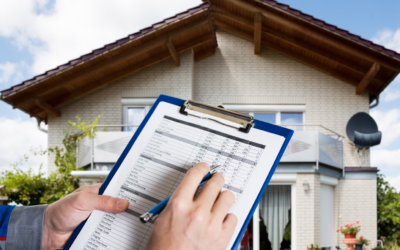Maintain your property – Especially in the wintertime, many people stay indoors and neglect issues such as peeling trim or an overgrown yard. But if the home looks unkempt, thieves may think it’s abandoned and, therefore, an easy target. Shoveling your walkways to clear them of snow and debris and removing holiday decorations and fallen tree branches in a timely manner will signal that the home is occupied.
Know your neighbors – Many people don’t really know their neighbors; it’s more than just saying hi and being friendly. Invite them over to see your home before it goes on the market, and introduce them to the people they may see regularly stopping by during this time (especially your agent). Then they’ll know who is and isn’t supposed to be at your home and can better assess when there may be a threat while you’re gone.
Assess your home’s vulnerability – Walk to the curb and face your house. Ask yourself, “How would I get in if I were locked out?” The first thing you think of, whether it’s the window with a broken lock or the door that won’t shut all the way, is exactly how a thief will get in. Think like a burglar, and then address the issues that come to mind.
Respect the power of lighting – Criminals are cowards, and they don’t want to be seen. The house that is well-lit at night provides a deterrent because thieves don’t want the attention and the potential to be caught by witnesses. It’s wise to invest in tools that make nighttime light automation easy. That includes dusk-to-dawn adapters that go into existing light fixtures and motion detectors. But beware of leaving your exterior lights on at all times, which signifies the occupant is gone for an extended period of time. You can also use technology to make your home look occupied. In addition to lighting, smart-home technology has made it easier to make it appear like people are home, even when they’re not. Systems that remotely control lighting, music, and appliances such as a thermostat can help you achieve this. Though not considered smart-home tech, simple lamp timing devices available at hardware stores are also good for this purpose.
Lock your doors – It’s amazing how many people think they live in a safe-enough neighborhood not to have to lock their doors when they leave. Some facts sellers should know: In 30 percent of burglaries, the criminals access the home through an unlocked door or window; 34 percent of burglars use the front door to get inside; and 22 percent use the back door, according to the FBI Uniform Crime Report
Reinforce your locks – A good door lock is nothing without a solid frame. Invest in a solid door jam and strike plate first, and then invest in good locks.
Consider surveillance cameras – Consider using a device called Ring, a doorbell with video surveillance capability that allows homeowners to view what’s outside their door on their smartphone. After Ring was installed in hundreds of homes, the burglary rate dropped by 55 percent, per reports. Most state and local regulations require posting a warning that people are being recorded. (But again, this can be effective even if you don’t have the cameras installed.)
Mark your valuables and record details – Use invisible-ink pens or engravers to mark identifying information (driver’s license or state ID numbers) on items. Log serial numbers and take photos of your belongings. Check to see if your police department participates in the Operation Identification program. They will have stickers for you to place on doors or windows warning would-be thieves that your items are marked. These steps may prevent them from pawning or selling stolen items and can help you reclaim recovered belongings.



